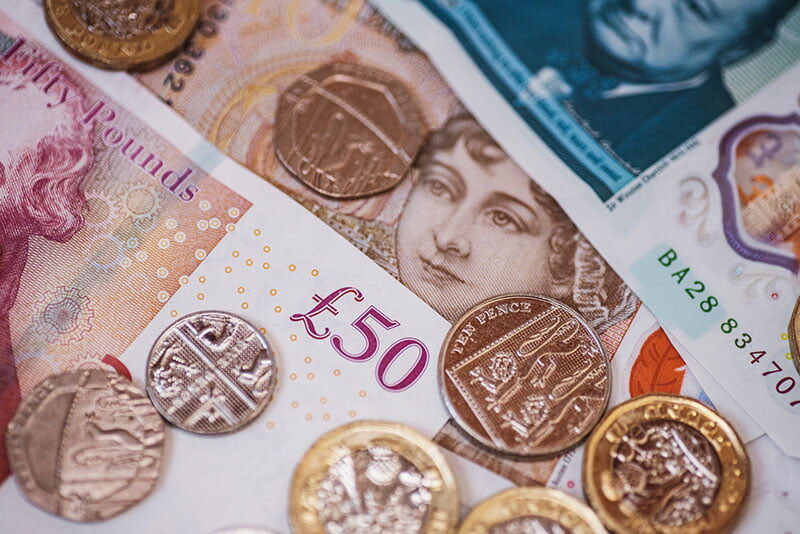Money Saving Tips

There is no doubt that with the recent rises in the cost of living, we are all looking for ways we can make our money go further. In this article, we’ll explore a few suggestions that may be helpful in getting you saving.
1. Maximise your ability to make tax free savings
A basic rate tax-payer can earn up to £1000 interest before needing to pay tax. A higher-rate taxpayer can earn up to £500 tax-free interest.
In addition to this, you can place £20,000 into a Cash ISA where the interest is tax-free, and you don’t need to report this income on a tax return.
Similarly, you can also place up to £50,000 into premium bonds with NS&I. Premium bonds are government backed and therefore have the highest level of savings protection available. Premium bonds may not be for you if you are trying to build a regular income stream, but they are a fun way to save, and are easily accessible.
No interest is received on premium bonds. Instead, you are placed in a draw where you can receive prizes. These prizes are tax-free and so there is no need to submit this information on a tax return. Prizes are received randomly, based upon an annual prize interest rate. This means there is no guarantee on the amount you receive, and you may receive more or less than the average.
2. Shop around for better deals.
Are you spending more on your bills than you need to?
Leaving your bills to auto-renew each year often seems like the easiest option. Whether you’re looking to buy car insurance, credit cards, or a broadband bundle, there is normally a huge difference between the cheapest and most expensive providers, so it’s worth browsing for the best offers. Shopping around is a great way to ensure that you’re paying the best rate based on your circumstances. You may even find that some comparison sites offer discounts on eating out and cinema tickets as well as offering cashback.
Taking the time to think about your bills will allow you to check what cover or services you actually need. If you’re happy with your current providers, you may benefit from contacting them to update your details if your circumstances have changed, because they may be able to offer a discount to your current price or rate.
It’s worth noting that the cheapest option isn’t always the best option, so you’ll need to decide what is best for your personal needs.
3. Plan your meals
Many of us find that food shopping is one of our biggest expenses. If you find yourself throwing food away each week, or buying food that ends up staying at the back of the cupboard for years on end, you could be spending more money than you need to.
Planning your meals ahead of time can help you create a concise shopping list to stop you from buying items that you don’t need.
If you’re used to buying big brands such as Heinz, or Kellogg’s, you could try supermarket own brands – you may not even be able to taste the difference.
Don’t be duped by discounts. Special discounts, such as buy-one-get-one-free deals, can offer good value, but be careful. Most supermarkets have a ‘reduced’ aisle but only buy items you actually need and know you are likely to keep and use.
Don’t shop on an empty stomach! Shopping while hungry tends to lead to overspending so try shopping after a meal or a quick snack to avoid this.
4. Practising the pause on purchases
If you are looking for ways to take control of your spending, we recommend practising the pause on purchases. This habit forces us to look at our spending decisions with our logical brain rather than our emotional brain.
This habit involves creating a new routine for when you’re about to make a non-essential purchase.
Here are the steps in this routine:
- When you go to make a non-essential purchase, place the item(s) in your basket if shopping online, or take a picture of it if you’re shopping in person.
- Don’t buy the item there and then. Leave it in your basket or as a picture on your phone for at least 5 days.
- During these 5 days ask yourself the following questions: Do I need it? Do I love it? How often will I use it? Does this item fit in with my values and priorities? Could this money be put to better use? How will I feel about this purchase in 12 months?
- After 5 days, look at the item once again, and you can decide whether to buy or not to buy.
When using this routine, you can be confident that you’ve made a considered purchase.
5. Establish a regular check in with your money
Creating a regular check in with your money is a really good habit to establish. Not only does it give you space to check for any ‘money leaks’ and identify whether you need to increase or decrease spending thresholds in certain areas, it also gives you the opportunity to explore whether your spending is in alignment with your longer term goals and your own personal values. (If you are unsure of these then one of our financial planning experts can help you to explore and identify what you want to achieve in life with your finances). For example, could the £50 for that gym membership you never use be instead placed into long-term savings? We all usually have at least one example of this type of ‘aspirational’ spending – where we are directing money towards a lifestyle that we would like to have rather than the one we do have. Being honest with ourselves is a great first step and can often free up valuable pounds.
Many people report that budgets and spending plans tend to fail. This is often because these budgets are looked at only once a month or less, and that makes it very hard to know exactly what is going on for us and what’s working and not working. A lot can change over the course of a month.
One simple way of avoiding this pitfall is to check in with our money weekly. Firstly, set aside a regular time to complete your money check in, ideally for an hour a week when you won’t be disturbed. Choose a time when you find it easy to focus, and when there won’t be other appointments or social events that could stop your regular check ins.
This time can be used to check over direct debits (more on this below), review personal spending, plan ahead for annual expenses, and review the previous month’s spending so you can set yourself realistic targets for the time ahead.
Aim to identify one action you can take from each check in (e.g. research a new electricity provider or cancel a direct debit) and schedule this in for the week ahead. Small actions like this taken weekly can really add up over time.
6. Slow down your spending rather than cutting out completely
When costs rise we often think this means missing out entirely on certain aspects of our discretionary spending. An alternative way to look at this is that we can still spend money on the things we enjoy, but we can simply reduce the frequency at which we spend on these things. If for example, you are a coffee lover, this may look like one or two takeout coffees a month rather than a few a week, or it may mean choosing between two purchases in the month, when previously we may have bought both. It may look like choosing to add certain treats to your supermarket shop just once a month rather than every week (good for our health too perhaps!).
We can also look at other ways of bringing new things into our life; growing cuttings from a neighbour’s garden, swapping nearly new clothes that no longer fit, or sharing the use of tools or other resources on a community sharing site. Many villages and towns have schemes in place so it may be worth checking this out, or if there isn’t one, perhaps consider starting one! You’ll be helping the environment at the same time as saving money.
Creating a discipline of waiting for certain purchases is also a really good way of building your savings muscle, which will see you in good stead for the future. Habits like these help us learn to prioritise longer-term savings, something that does not necessarily come naturally to us as humans.
7. Place your personal spending funds into separate accounts and make use of current account budgeting features
One of the simplest ways of creating discipline around your personal discretionary spending is to place a fixed monthly sum into a separate spending account and only spend from this account. This will also help us to get to know exactly what we tend to spend our money on.
While we may be quite familiar with our fixed bills and costs, when it comes to our discretionary spending we may be a little less organised.
You can also take this a step further and divide your monthly spending allowance into a weekly amount. This allows you to keep a track of spending as the month goes on.
You can also make use of budgeting apps to help you stay on target with these spending goals. Some current accounts such as Monzo and Starling provide these features as part of their banking apps. These apps can provide helpful reminders if, say, you have gone above your monthly spending targets, which you can set easily based on the information on spending that your banking history provides. But do be aware that none of these apps are perfect – and it can be easy to simply ‘ignore’ the messages and ‘overwrite’ the limits that you have set. Becoming conscious of and maintaining awareness of your spending is by far the best way to successfully bring discipline to your spending habits.
8. Give your Direct Debits a review
It’s so easy to lose track of Direct Debits that you’ve set up, and you may find that you’re still making payments for things you no longer need. Reviewing your Direct Debits will allow you to become fully aware of your finances, and you may even save a bit of money.
Firstly, you will need to sit down with your account and make a list of all the Direct Debits coming out. Can you identify them all?
Secondly, assign a task the week ahead. It might be a good idea to cancel an unused gym membership, or if you’re subscribed to Netflix, Amazon Prime, and Disney+, consider cancelling one of them.
Finally, linking back to number 2, look at the products and services that you could be overpaying for. Set time aside to research better deals for each product/service that you’re currently paying for.










